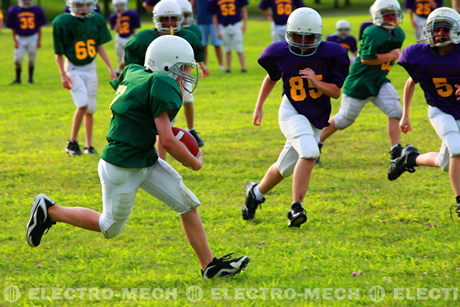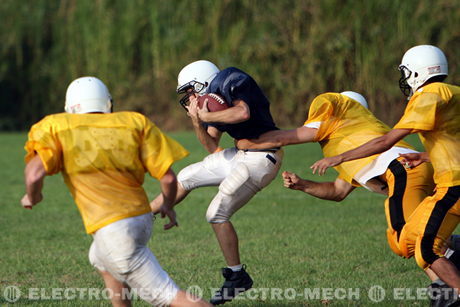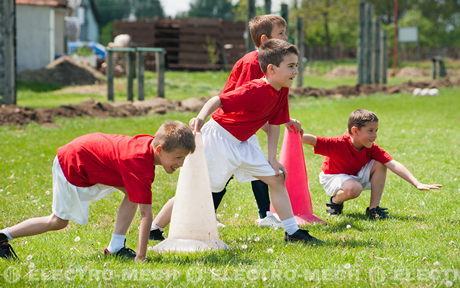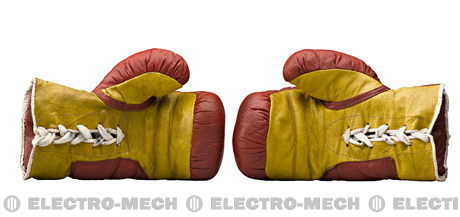The owner of the Pittsburgh Pirates, Barney Dreyfuss, had a dream in 1903 to create the most beautiful stadium in the country. He wanted to move the Pirates from the Exposition Park location to a seven acre area in Pittsburgh. The design he selected would blend with the other buildings in the district of Schenley Park. At the time, that location was a bit of a trolley ride (10 minutes) from downtown and the project became known as “Dreyfuss’ Folley”. The name didn’t last long mainly due to his design concept: a 3-tiered stadium of concrete and steel, setting precedence for a stadium design as the first one in the country.
Continue reading “Pittsburgh’s Forbes Field: Once the 2nd oldest stadium in the country”
history of stadiums
The AstroDome: One of America’s Favorite Architectures
Any sports fan that ever heard the word “Astrodome” – knew exactly what and where it was. Commonly known as the Houston Astrodome, this was notably the first stadium build for multi-sports purpose. The grand opening in 1965, displayed the domed façade and it quickly became known as the “Eighth Wonder of the World”. Judy Garland as well as the famed super group “The Supremes” were the highlight of performance in the opening night.
The design was based on a rain-out game attended by the former mayor of Houston. Inspired by the ancient Roman concept to offer a velaria to protect the viewers, he changed his project direction and began working on getting a domed stadium in place.
Continue reading “The AstroDome: One of America’s Favorite Architectures”
War Memorial Stadium: Ol’ Rockpile of Buffalo

Buffalo New York has had a tenuous reputation, but there is something about the people that live there, that gives the residents resilience like no other. They suffer horrendous winters and lovely light summers; a hard working class of people that are some of the most loyal fans; even when their beloved Buffalo Bills aren’t winning. They don’t seem to care, because they stand firmly behind their team.
As early as 1937, a stadium was built for a max capacity of around 33,000 fans. The original name was Roesch Memorial Stadium, later changed to Grover Cleveland Stadium (in honor of the renowned President and former Buffalo resident) and then Civic Stadium. In 1960 the name was finalized as War Memorial Stadium. One of the smallest venues for football, the people of the area supported the many renovations to give it a final capacity of 46,500.
Continue reading “War Memorial Stadium: Ol’ Rockpile of Buffalo”
Cleveland Stadium: Home of the Dawg Pound

The original idea of Cleveland Stadium was a combined effort of Cleveland City government officials, real estate investors and Cleveland Indian team officials. The purpose was to give the team a professional and sharp venue to play while increasing revenue for the Cleveland Ohio downtown area. The additional hopes in 1930 were that it would attract the Summer Olympics games. This hope was dashed when Los Angeles received the coveted award for the games.
When construction started on Cleveland Stadium, the media cruelly dubbed the venue “The Mistake by the Lake”. When it was completed, the stadium hosted the Cleveland Indians as well as the National Boxing Associated World Heavyweight Championship. Seating capacity for baseball and football varied, but with an average of around 80,000.
Continue reading “Cleveland Stadium: Home of the Dawg Pound”
Atlanta-Fulton County Stadium: The Launching Pad
The 1960’s was a time of progress in our country. Large cars, booming business and the introduction of rock and roll brought about many changes. Atlanta Georgia was a city that needed to move forward with the times. The decision in 1964 for the then, non-identified Major League Baseball organization to offer a verbal commitment to Atlanta created the grounds to build a stadium. In 1965 the Atlanta-Fulton County Stadium was opened, having taken only 50 weeks to construct.
Continue reading “Atlanta-Fulton County Stadium: The Launching Pad”
Miami Orange Bowl: A moment in history

In 1936 the City of Miami Public Works Department made a decision to build a stadium that would be a highlight to Miami. Construction was finished and in 1937 the football team, then named the Miami Hurricanes, played their first game. Since Roddy Burdine was a pioneer of the Miami area, the first name given to the stadium was Burdine Stadium. The stadium was renamed in 1959 to accommodate the college football game of the Orange Bowl.
The popularity of the stadium encouraged additional enhancements, so that in the 40’s and 50’s seating was added to create a max capacity of over 80,000. This led to the ability of a pro football team game and The Miami Dolphins played their first game at the Orange Bowl in 1966. The Orange Bowl became a centerpiece of history when the first televised prime time college game was played.
Continue reading “Miami Orange Bowl: A moment in history”
Busch Stadium: From Old to New

Busch Stadium was one of the most attractive stadiums in baseball. Originally constructed as a multi purpose venue, it was the talk of St Louis. Featuring the famous ‘Crown of the Arches’ to compliment the St Louis ‘Gateway Arch’, the stadium became best known as the pride of The Cardinals. The original name that it was given was Civic Center Busch Memorial Stadium, however in 1982 they decided to change the name to it’s now well known ‘Busch Stadium’. The venue was named after the famous family of the team’s ownership, the Anheuser-Busch, Busch Family.
Continue reading “Busch Stadium: From Old to New”
The Spectrum: Heart and Soul of Philadelphia
Anyone that lived in Philadelphia from the late 60’s until the 2,000’s, knew and loved ‘The Spectrum’. While it was called by many other names, including: The Wachovia Spectrum, CoreStates Spectrum, and First Union Spectrum, it was and always will be known as simply ‘The Spectrum’ by the locals.
Oddly named in 1967 when it opened, the letters are actually an acronym: ‘SP’ represents ‘sports’ and has also been referred to as ‘South Philadelphia. The ‘E’ for ‘entertainment,’ as it was planned to host a variety of venues. The ‘C’ for the many ‘circuses,’ that would be there. The ‘T’ for all of the ‘theatricals,’ plays, drama and movie backdrops. The ‘R’ for ‘recreation,’ which covered a lot of topics. And ‘UM’, well they decided that would stand for: ‘um, what a nice building!”.
Continue reading “The Spectrum: Heart and Soul of Philadelphia”
